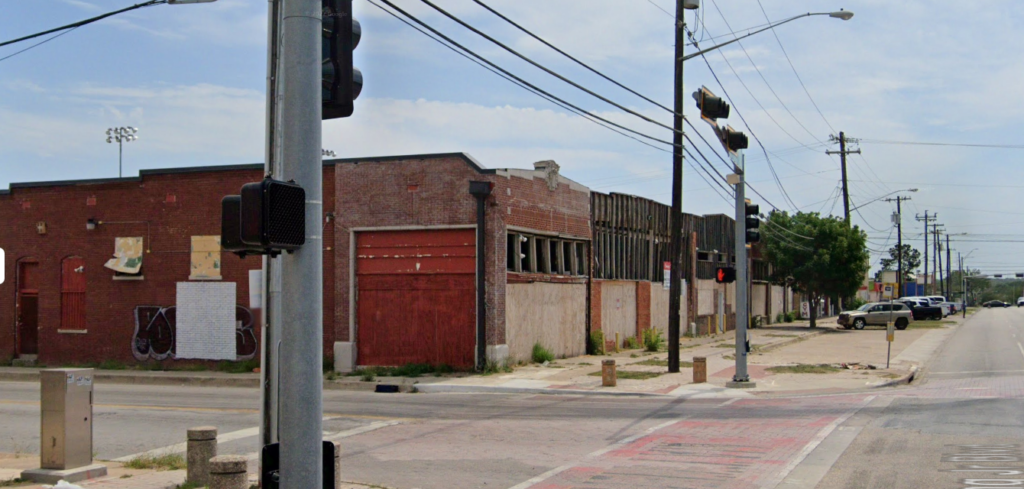Power of Place-Based Investments Can Lead to Better Outcomes for Children
By Trey Hill, Senior Program Officer
The Rees-Jones Foundation cares about vulnerable children. Full stop. When people ask what are the Foundation’s priorities, I always say the through line is we care about children who have been dealt a tough hand. Core to The Foundation’s mission is to serve vulnerable children and help address the inequities and obstacles that keep them from reaching their full potential both domestically and internationally.
That is one of the reasons we have begun to pursue a targeted place-based investment strategy in South Dallas.
There is a growing body of research that points to the critical role that place plays in shaping the opportunities and outcomes of children. The research indicates that children growing up in low-income neighborhoods face a myriad of challenges that can hinder their long-term success. These challenges include limited access to quality education and enrichment activities, limited access to healthcare, few safe recreational spaces, and little exposure to opportunities outside of their neighborhood. Too often these neighborhoods also have a higher prevalence of criminal activity and violence. All this adds up to a bad recipe that experts call “toxic stress.”
I observed this while living in West Dallas. West Dallas was an area of concentrated poverty and home to a large public housing complex. Many families had lived there for multiple generations. One night, not long after we moved into the community, my wife and I were driving around praying for and observing our new neighborhood. We both noted there was a “heaviness” to the atmosphere, So many of the things we took for granted in our old neighborhood like quiet nights, mature trees and green spaces, good grocery stores, and graffiti-free buildings, simply did not exist there. We both concluded if we had grown up there as children our future outlook and outcomes might have been pretty dim.
The net result of all these limiting factors: We have given poverty an address.
Place-based investing is an emerging, promising strategy to improve outcomes for children in neighborhoods like these. In it, funders focus investments in a specific geographic area to address the disparities in economic, educational, and health outcomes. Rather than only providing individual interventions by funding individual organizations, place-based investing takes a look at a community as a whole and recognizes the complexity and inter-relatedness of all the structures and organizations that make up a neighborhood. It seeks to identify the assets in the community and empower and build upon them. It identifies gaps that are holding a community back and seeks to seed new life there. Is there a need for quality, affordable housing? Are there transportation issues or too many potholes? Not enough well-paying jobs? All these things are considered in place-based investing.
Place-based philanthropy also places a premium on the people and the relationships in the community and with the grantees. They work with the stakeholders to help accomplish the vision of the residents for their community.
That last sentence is key to our place-based investment strategy.
In our work in South Dallas, we have identified a specific neighborhood and partners in the neighborhood who have long histories, deep relationships, and immense respect in and out of the target neighborhood.
By targeting investments in a defined neighborhood and engaging the community stakeholders in the planning and implementation of initiatives, we hope to ensure that the needs of community members and their children are at the forefront of decision-making processes. Rather than outsiders imposing solutions on a community, as has traditionally been done, the goal is for the community and its stakeholders to create their own desired outcomes for their community.
It is our job, as a funder, to help provide resources, relationships, and expertise to help bring those solutions to life. (And to do so without displacing all the current residents. One of the biggest challenges of the process).
What are the desires of the community? They are often the same desires any of us would have for our neighborhood — Safe streets, good schools, recreational spaces for kids to play, access to healthy food options, and a good mix of quality housing options.
If we are successful in our efforts, a sense of community ownership, cohesion, and collaboration will develop. The effects of poverty will be minimized and pathways of hope will be created, leading to more sustainable, equitable, and just long-term outcomes.
Or, as my friend Dr. Terry Flowers, Headmaster of St. Phillips, says, “We will create a community that will make God smile.”
Share this post:
Category: Original ContentUncategorized
Remember to Whom We Belong By T. Hardie, President For to us a child is born, to…

